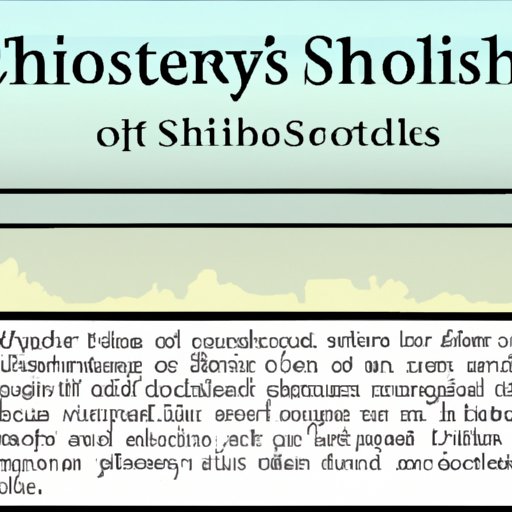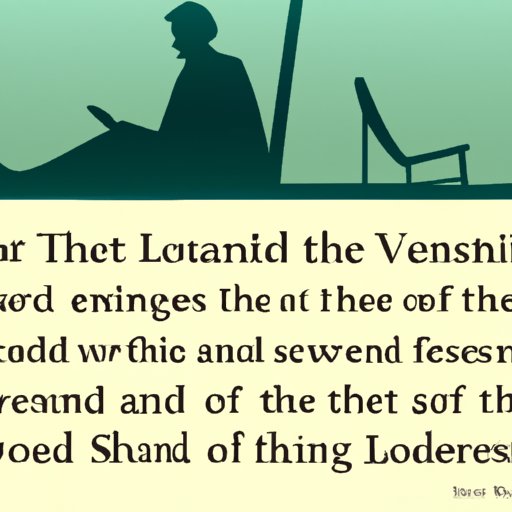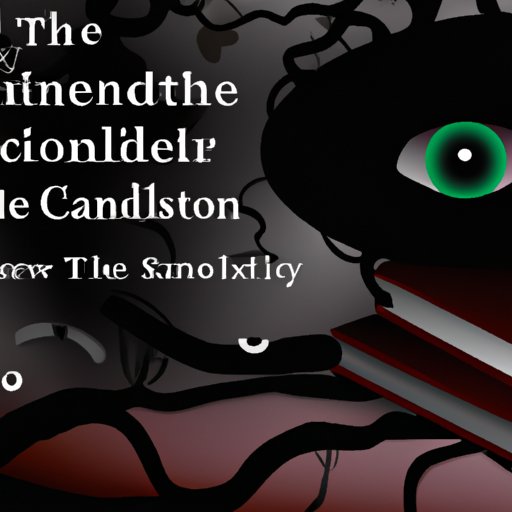Introduction
Foreshadowing is a literary device used by authors to hint at events that will take place later in the story. This technique is often used to create suspense or provide clues that lead to the resolution of the plot. In this article, we will explore what foreshadowing is, how it works, and how to use it effectively in your writing.
Exploring Foreshadowing in Literature: What Is It and How Does it Work?
Foreshadowing is a technique used in literature to hint at events that will occur later in the story. It can be subtle or overt, but it always has the same purpose: to give readers a hint or clue about what is to come. The writer may use dialogue, imagery, or other narrative elements to foreshadow upcoming events. By doing so, they can build tension and anticipation for the reader.
Foreshadowing can be used in a variety of ways, from providing clues and hints to setting up expectations that are later subverted. It can be used to build suspense and mystery, as well as to provide insight into the characters and their motivations. When used effectively, foreshadowing can make a story more engaging and powerful.
A Beginner’s Guide to Understanding Foreshadowing in Literature
In order to understand and use foreshadowing effectively, you should first become familiar with the different types of foreshadowing. There are three main types of foreshadowing: direct, indirect, and situational. Direct foreshadowing is when an event is directly stated or hinted at, such as when a character says “this won’t end well.” Indirect foreshadowing is when an event is implied or suggested, such as when a character makes a comment about the future without actually saying it outright. Situational foreshadowing is when an event is set up in the present that will have consequences later on, such as when a character does something that will have negative repercussions later on.
Once you have a basic understanding of the different types of foreshadowing, you can begin to identify and analyze it in a text. To do this, you should look for patterns and clues that indicate something is going to happen in the future. Pay close attention to any dialogue, actions, or symbols that may be hinting at an upcoming event. When analyzing foreshadowing, ask yourself questions such as: What is being hinted at? How does this relate to the overall plot? How does this affect the characters?

Common Examples of Foreshadowing in Literature
Foreshadowing is a common technique used in both classic and modern literature. In classic works, foreshadowing is often used to add dramatic irony or foreboding. For example, in William Shakespeare’s Romeo and Juliet, Romeo’s line “Parting is such sweet sorrow” foreshadows his eventual death. In modern works, foreshadowing typically serves to build suspense and anticipation. For example, in J.K. Rowling’s Harry Potter series, the character Professor Snape’s ominous line “You would be wise to be careful” foreshadows his later betrayal of Harry.
The Role of Foreshadowing in Building Suspense in Literature
Foreshadowing can be used to increase tension and suspense in a story by hinting at something that will happen later on. It can also provide clues to the reader that can help them better understand the story and its characters. Finally, foreshadowing can lead to unexpected twists and turns that keep readers guessing and engaged.
For example, in Agatha Christie’s novel And Then There Were None, the character Lombard’s warning “I don’t like this house. I’ve got a feeling there’s going to be trouble” foreshadows the murder mystery that unfolds throughout the novel. This foreshadowing builds suspense and keeps readers guessing until the very end.
How to Use Foreshadowing Effectively in Your Writing
When incorporating foreshadowing into your own writing, it’s important to use it sparingly and strategically. Too much foreshadowing can make the story predictable and take away from the suspense. Here are some tips for crafting effective foreshadowing in your writing:
- Be subtle: Subtle foreshadowing is often more effective than overt foreshadowing, as it allows readers to make connections between events without having them spelled out for them.
- Focus on the characters: Focusing on the characters and their motivations can help you create more meaningful and effective foreshadowing.
- Use symbolism: Symbols can be used to hint at upcoming events without making them too obvious.
- Provide clues: Providing clues or hints can help readers put together the pieces of the story and build anticipation.
The Art of Creating Foreshadowing in Fiction Writing
Creating effective foreshadowing in your writing requires practice and skill. It’s important to think carefully about how and when to introduce clues and hints, as well as how to make them engaging and meaningful. Here are some tips for creating engaging foreshadowing in your writing:
- Create anticipation: Introduce clues and hints early on in the story so readers can begin to anticipate what is to come.
- Be consistent: Make sure the clues and hints you introduce are consistent with the tone and theme of the story.
- Make it relevant: Make sure the foreshadowing you introduce is relevant to the plot and characters.
- Keep it surprising: Avoid making the foreshadowing too obvious so readers are kept guessing and engaged.

Analyzing Foreshadowing in Classic Literary Works
Analyzing foreshadowing in classic literary works can help you gain a better understanding of how it is used and how it affects the story. To analyze foreshadowing in a classic work, look for patterns, symbols, and other clues that may be hinting at something that will happen later on. Pay close attention to dialogue and other narrative elements, as they may contain hidden meanings. Once you have identified and analyzed the foreshadowing, consider how it affects the story and its characters.
For example, in Charles Dickens’ novel Great Expectations, the narrator Pip’s description of Miss Havisham’s room as “a most dismal suite of rooms” foreshadows her eventual death. This foreshadowing helps to build suspense and adds to the tragedy of the story.
Conclusion
Foreshadowing is a powerful tool used by authors to hint at events that will take place later in the story. It can be used to build tension and suspense, as well as to provide clues and insights into the characters and their motivations. By understanding the different types of foreshadowing and how to use it effectively in your writing, you can craft compelling stories that keep readers guessing and engaged.
This article has provided an overview of foreshadowing in literature and how to use it effectively in your own writing. From analyzing classic works to understanding the art of creating subtle foreshadowing, this article has explored the many facets of this important literary device.

Final Thoughts on Foreshadowing in Literature
Foreshadowing is an important tool used by authors to create suspense and anticipation in their stories. By understanding how to use it effectively, you can craft stories that keep readers engaged and guessing until the very end.
(Note: Is this article not meeting your expectations? Do you have knowledge or insights to share? Unlock new opportunities and expand your reach by joining our authors team. Click Registration to join us and share your expertise with our readers.)
